Starting a business can be tough when you don’t have products to sell. If you’re not making things yourself, you’ll need to find a good supplier who can source or manufacture the items your customers want.
The good news is, if you’re starting your business on Shopify, there are lots of options for sourcing products. By using integrated retail or dropshipping suppliers, you can stock your store with popular items. You can even team up with suppliers that specialize in niche products or offer product customization.
Ready to source profitable products for your business? This guide shows you the best ways to find products, including eight product sourcing apps that connect potential suppliers with Shopify stores.
What is product sourcing?
Product sourcing is the process of finding and acquiring products to sell to customers for profit. It can involve purchasing products directly from manufacturers, working with wholesalers, or commissioning custom products.
Some product sourcing use a dropshipping fulfillment model. That means your supplier will manage inventory and ship orders directly to your customers.

Free Guide: How to Find a Profitable Product to Sell Online
Excited about starting a business, but not sure where to start? This free, comprehensive guide will teach you how to find great, newly trending products with high sales potential.
Where can you source products from?
Here are five popular ways to source products for your online or physical store.
Wholesalers
If you want to get your business up and running quickly, buying products wholesale can be a good strategy.
Wholesale product sourcing means purchasing goods in large quantities directly from a manufacturer, marketplace, or distributor. This allows you to benefit from lower, bulk pricing. By buying products wholesale, you can quickly stock your store and start selling without needing to wait for manufacturing or delivery before fulfilling a customer order.
Retailers often achieve profit margins of more than 50% when selling products sourced from wholesalers. Low purchase prices result from ordering in bulk and negotiating a lower cost per unit.
The downside of sourcing products through wholesalers is that you’ll need resources for storing and managing your inventory, as well as the cash flow to pre-pay for stock (unless you can set up a payment plan).
Dropshipping suppliers
Dropshipping is not only a product sourcing technique, but also an order fulfillment method. As a dropshipper, you don’t hold inventory or handle shipping. Instead, you partner with a dropshipping supplier who takes care of storing and shipping products for you.
The process is straightforward:
- Find a reliable dropshipping supplier.
- Add their products to your store.
- Market your store and products to your customers.
- When you receive an order, the supplier is notified and they handle shipping.
There are two main ways to work with dropshipping suppliers:
- Working directly with a dropshipping supplier: You create your own process for managing orders and communicating with the supplier.
- Using a dropshipping app: An app connects you to a marketplace of suppliers with an established system for relaying customer orders. You can manage multiple suppliers conveniently in one place.
Manufacturers
There are two primary ways to source products directly from manufacturers:
Order white label products
White label products are generic items produced by manufacturers, which can often be modified with your business’s branding or logo.
Learn more: The 13 Best White Label Products To Sell in 2024
Commission a private label product line
With private label products, manufacturers create a custom version of an existing product exclusively for your business. Depending on the manufacturer and the product, you may be able to request unique branding, materials, ingredients, and features to differentiate your product from other versions.
Learn more: How To Find Private Label Products and Start Selling
Working with manufacturers offers more control over branding and pricing. You can ensure the quality of the final product, which may be challenging with other sourcing methods like dropshipping. While there can be upfront expenses involved, manufacturing can result in lower costs per unit and higher profit margins.
Downsides include minimum order quantities (MOQ), which are often required by manufacturers and may mean investing thousands of dollars upfront. Also, the process of prototyping, sampling, refining, and producing a product can take a long time.
If you want to source products from manufacturers, Alibaba’s manufacturer marketplace can be a good place to start.
Trade shows
Trade shows are events where businesses come together to showcase their latest products and services. These events usually take place in convention centers in major cities and span several days. You can also find smaller, local trade shows with regional businesses.
Attending trade shows offers an opportunity to experience products firsthand, network with business owners, and gain inspiration for new product ideas.
Create your own products
If you start a business based on your passion or area of expertise, you could create your own products instead of sourcing them.
Whether it’s beauty products, clothing, or jewelry, handcrafting products gives you complete control over quality and branding.
However, it’s important to note that this method can be time-consuming and difficult to scale. When making your own products, consider additional costs, such as raw materials, warehousing and storage, and labor.
It’s often recommended to start small with a single homemade product and gradually grow your business. For example, science teacher Kyle LaFond started his personal care business, American Provenance, from his homemade natural deodorant.
8 Shopify apps for product sourcing
Using these apps, discover a wide range of products to add to your store while streamlining the product sourcing process:
1. Faire

More than 100,000 brands and independent makers sell their products to retailers using Faire.
With Faire, you can search for home, clothing, beauty, and lifestyle products—and view detailed information about items and manufacturers before buying.
Each independent brand that appears on Faire is vetted by a team of retail experts, reducing any risk for retailers when working with a new supplier. Eligible retailers can also buy now, pay later, with up to 60 days to pay for the products they order.
Faire’s catalog contains a wide variety of products, making this product sourcing app a great way to find your next bestseller, no matter your niche. Some of the most popular types of products you can source from Faire include:
- Home décor
- Food and drink
- Beauty and wellness
- Jewelry
Faire is fully integrated with Shopify through the Faire app, so you can seamlessly manage orders.
2. Printful
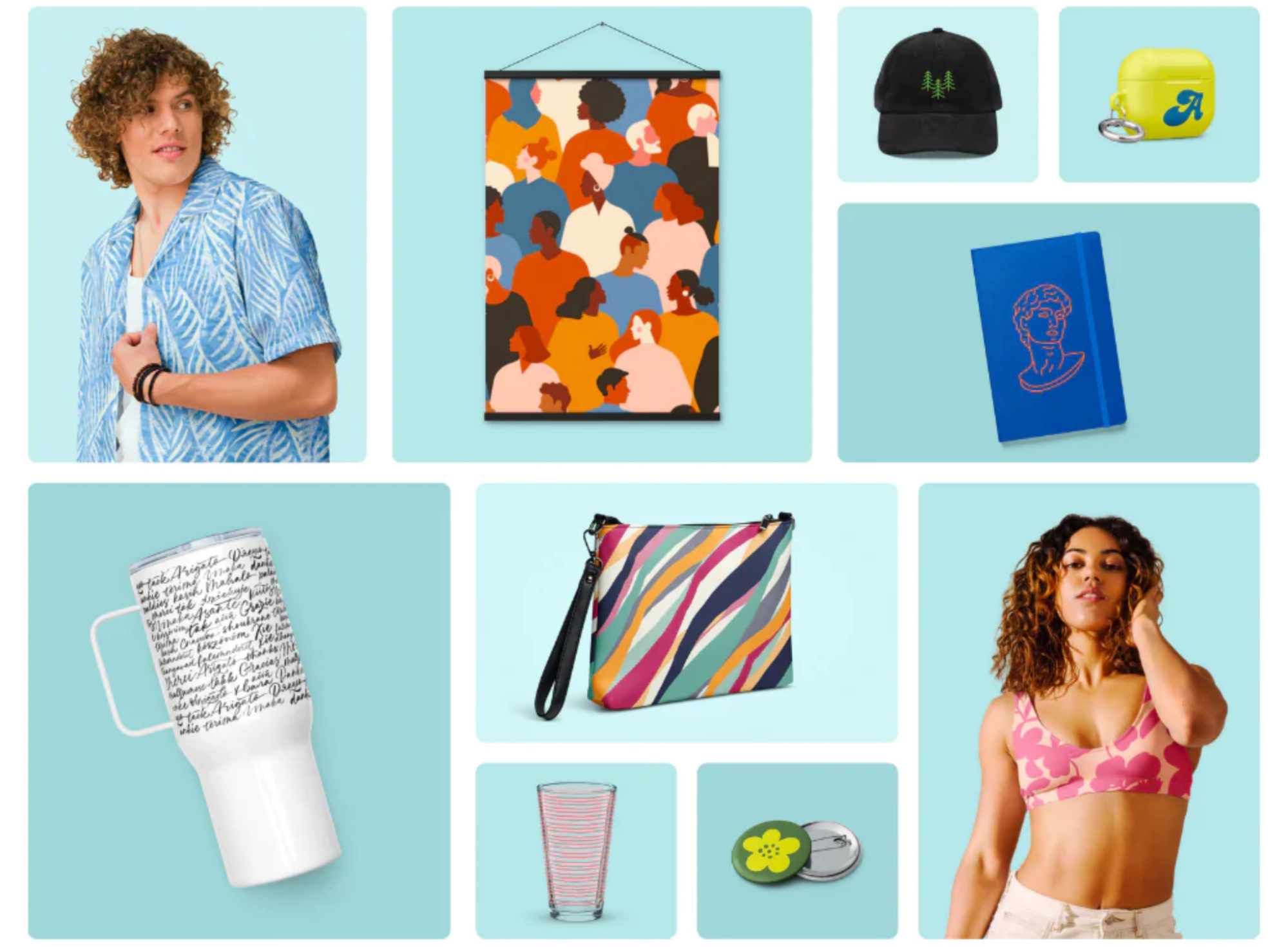
Printful is a print-on-demand company that lets you choose from a large catalog of products to customize with your own designs.
Depending on the product, customization options can be extensive, including colors, custom designs and graphics, and the ability to brand product stickers, package inserts, and labels.
You can also order product samples at a discounted price, so you can confirm product quality before you promote items using your brand.
The types of products you can source and customize with Printful include:
- T-shirts
- Posters
- Embroidered hats
- Socks
- Phone cases
- Pillows
- Jackets
- (And more)
3. DSers
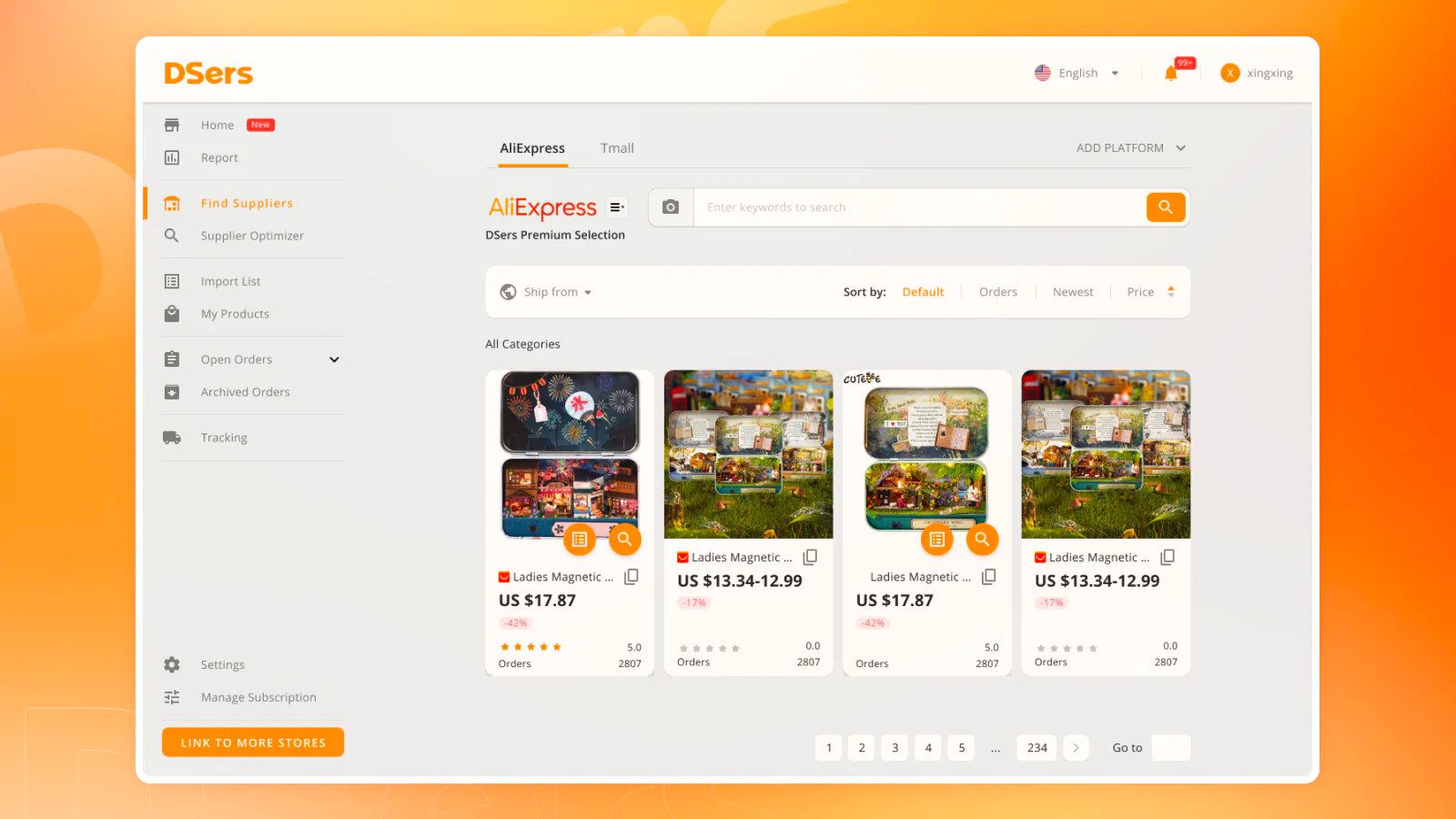
DSers was built to help you source and dropship products from supplier marketplace AliExpress.
Once you’ve found an item on AliExpress that you want to sell, you can use the DSers app to add the item to your Shopify store and relay customer orders directly to your supplier.
Using DSers and AliExpress dropshipping, pick from millions of products across almost any niche market you can think of.
One business idea here is to use DSers to curate products for a branded online store that serves a specific audience, like accessories for pet owners or photography gear for travel.
Best of all, DSers gives you data about how each product performs, so you can make informed decisions about what to add to your store.
Types of products you can source through DSers include:
- Clothing
- Accessories
- Home goods
- Electronics
- Phone accessories
4. Spocket

Spocket is another product sourcing website and app that makes it easier to find products from dropshipping suppliers.
One of the benefits of using Spocket is its large directory, which covers the US and the EU. Thanks to a majority of suppliers being based domestically, Spocket also offers unusually fast shipping times for a dropshipping platform.
Through pre-negotiated wholesale pricing, Sprocket offers up to 40% discounts on products, enabling higher profit margins. Order product samples from the dashboard to confirm quality before selling.
The products you can source through Spocket include:
- Earrings
- Apparel
- Sports equipment
- Footwear
- Bath and beauty items
5. Syncee
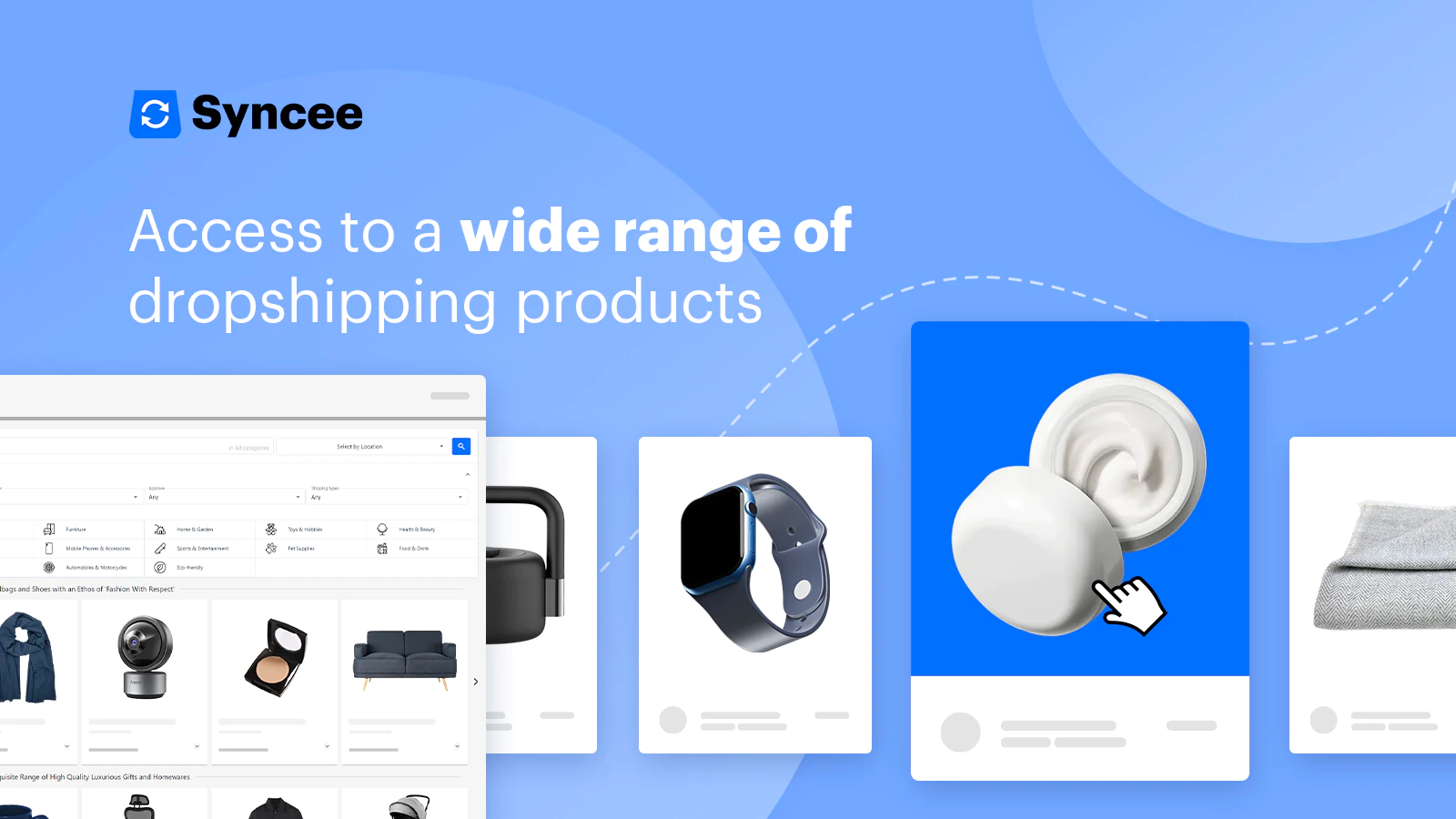
With Syncee, you can browse a catalog of trustworthy suppliers from around the world and easily import products into your store to start selling.
Products you can source include:
- Baby products
- Watches
- Fashion
- Toys
- Fishing accessories
- Perfume
6. Creative Hub
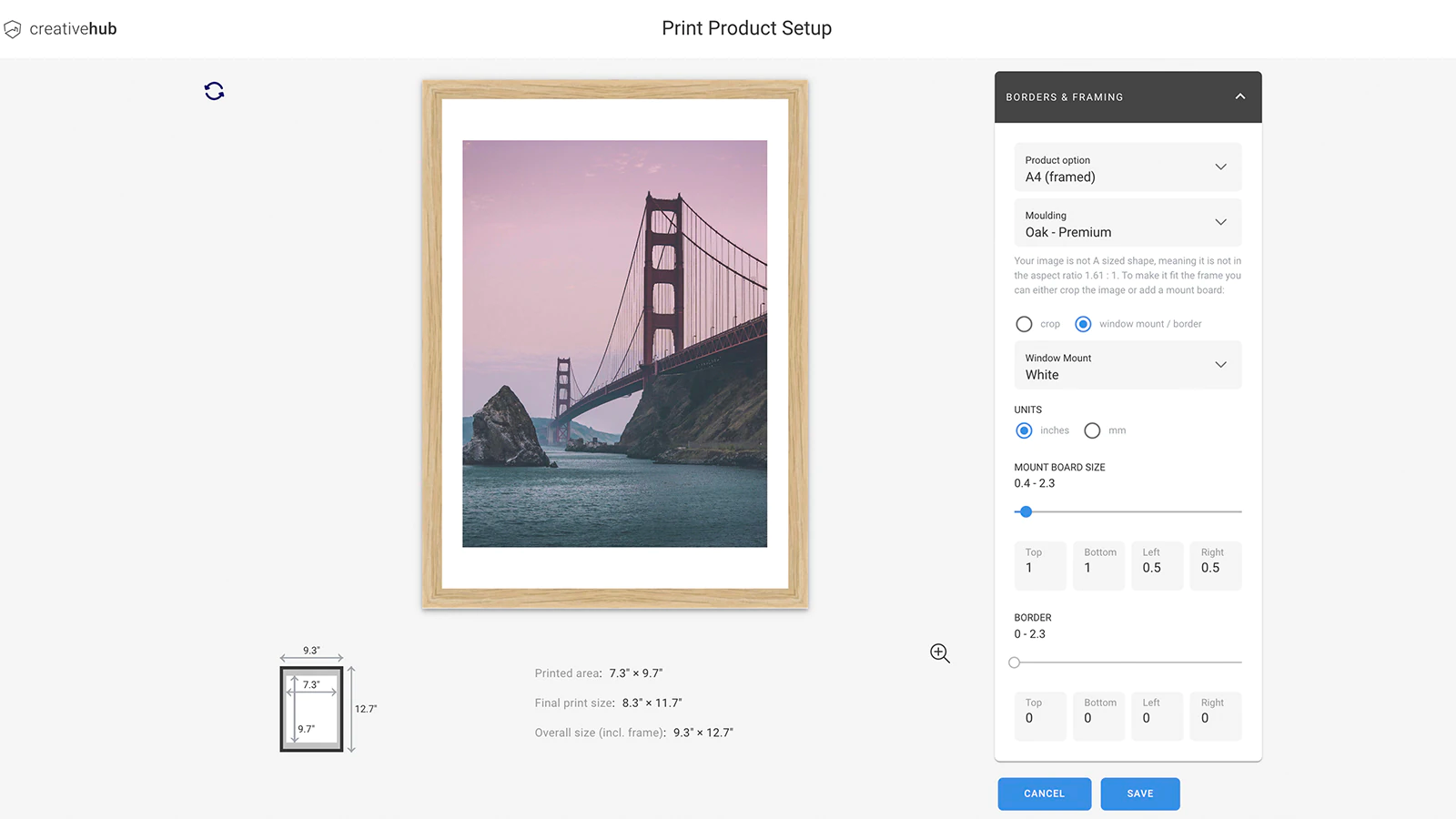
Using Creative Hub, you can sell art online from popular and innovative creatives. This UK-based product sourcing website gives your business access to work from contemporary artists.
For each piece, you’re told the retail price (the minimum price you can sell the item for) and your share as a vendor (how much you stand to make at the retail price). Some prints are even limited editions, commanding a higher price tag.
There is a fixed international shipping cost, which keeps shipping simple and lets you sell to anyone, anywhere in the world. You can also print your logo on the packaging label, as well as add inserts to your orders with information about the artist or your business.
Products you can source with Creative Hub include:
- Fine art giclée and C-type prints
- Framed prints
- Canvas prints
7. My Online Fashion Store
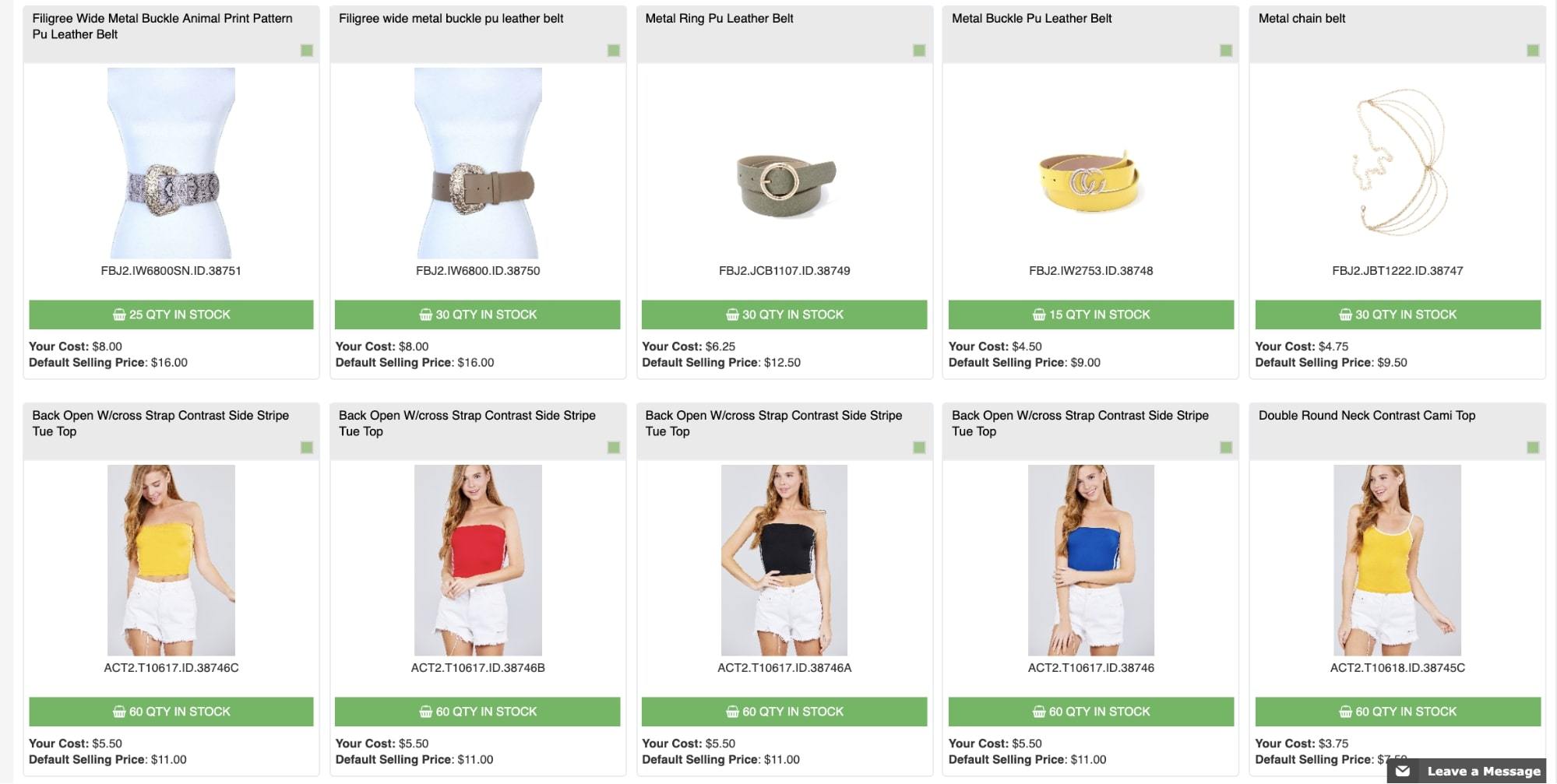
My Online Fashion Store is a US-based dropshipper with a large inventory of apparel for women. From tops to jewelry to shoes, each of its more than 6,000 items has a suggested selling price to help you set your profit margin.
This product sourcing app offers free returns and competitive shipping rates from its LA warehouse. However, it only fulfills orders for customers based in the US.
The products you can sell include:
- Scarves
- Tank tops
- Lingerie
- Sunglasses
- Handbags
- Hats
- Belts
8. Lulu Direct

Lulu Direct focuses exclusively on books and calendars, letting you use print-on-demand fulfillment to launch your own book product. You can pick the format and size of the book, whether you want a hardcover or softcover, color or black and white ink, and the quality of the paper stock.
Have an idea for a bestselling coffee table book? Lulu Direct is a low-risk way to try out your idea before investing in it.
The types of books you can create include:
- Hardcover photo books
- Novels
- Comic books
- Workbooks
- Calendars
- Journals and notebooks
Find more custom book suppliers: 10 Best Providers for Print-On-Demand Books
Product sourcing best practices
To ensure successful product sourcing for your online business, consider the following best practices:
Conduct market research
Market research helps you understand the needs and preferences of your target audience. It also tells you whether other businesses are competing to serve your potential customers.
By gathering and analyzing information about people, companies, and your industry, you can make informed decisions about product sourcing or product development.
When conducting market research for product sourcing, focus on the following aspects:
Industry trends
Stay updated on the latest trends in your industry to identify emerging opportunities and adapt your product offerings accordingly.
Keep an eye out for changes in your market. What products are currently most popular, and what products have faded in popularity?
Consumer needs
Understand the needs, preferences, and pain points of your target audience to choose products that align with their demands. How do competitors’ products meet (or fail to meet) customer needs?
Legislative trends
Keep track of any regulations or laws that may impact the products you source, ensuring compliance and avoiding potential legal issues. For example, if you are sourcing beauty products, you’ll need to stay updated on regulations regarding ingredient safety, labeling requirements, and product testing.
Knowing this information helps you choose the right product before you source a supplier.
It helps you understand a problem or opportunity—for example, if a newly developed fabric helps hikers wick away sweat and stay dry for hours, your outdoor clothing store may want to source products made with this fabric.
There are two main ways to conduct market research:
Primary research
Conduct firsthand research by ordering and testing products, or conducting surveys and interviews with customers.
Secondary research
Collect publicly available information from sources such as magazines, government reports, industry analysts, and trade publications.
Get samples
Once you’ve identified a product and found a reliable supplier, it’s crucial to request samples or prototypes before committing to a large order. Sampling allows you to assess the quality of the products that you plan to put your brand’s reputation behind. As cool as a product may look in photos, you want to guarantee it’s good enough to sell to your customers.
A sample run also helps you evaluate a supplier’s competence in terms of communication, quality control, order processing, shipping, and packaging. You’ll understand how they communicate delivery information and package products. Making multiple sample orders under different names can also help you vet product consistency.
Tyler Rybacki, former product development expert at subscription coffee company Jot, emphasizes the importance of ordering samples before making a final decision.
“Product samples enable you to inspect the level of quality so that you can ensure every order is worth your investment. Having a sample on hand is also helpful for shooting product photos for sales and marketing materials and your ecommerce website,” he says.
“Always order a sample product before committing to an order.”
When requesting samples, remember to:
- Provide detailed specifications of the product, including any specific colors or styles.
- Ask the supplier to label the sample package with “no commercial value” to avoid duty charges when sourcing from overseas,
- Ask for a company tag and model number to differentiate samples during testing.
Tyler suggests sourcing samples from up to five suppliers to assess the range of quality, pricing, and service. By ordering samples in various colors and styles, you can determine which product and supplier best align with your needs.
Source local when possible
Local sourcing refers to getting products from domestic suppliers instead of international ones. “Local” could mean your immediate community or your home country. Sourcing locally can reduce supply chain costs, help you launch products faster, and earn more revenue.
Stephen Light, co-owner of mattress company Nolah Sleep, has worked with both international and local suppliers to source his company’s mattresses. He found that shifting to local suppliers helped Nolah Sleep avoid global supply chain problems and gain more control over the procurement process.
“Raw material suppliers within your region are likely to be more reactive to your needs as a business, and able to fulfill and coordinate shipments within a short time frame.”
With local suppliers, you can also inspect the products in person.
Work with multiple suppliers
Working with one supplier for your company makes product sourcing simple. Add multiple suppliers to the mix and you may complicate order management.
However, a multi-supplier strategy can reduce supply chain risks and help meet customer demand.
According to Stephen, it’s a good idea for businesses to be “proactive and build relationships with multiple suppliers, including backup suppliers.” Having a shortlist of suppliers provides your business with a safety net in case of product shortages and delays.
Any risks of a multiple-supplier strategy can be lessened by working with high-quality suppliers. Before working with a supplier, evaluate the following criteria:
- Product quality
- Delivery and lead times
- Returns
- Defects
- Customer complaints
- Capacity
Aaron Alpeter, founder of Izba, a supply chain consulting, outsourcing, and technology firm, suggests thinking about your long-term goals when assessing a supplier.
“To ensure that your supplier’s capacity or inventory cash flow doesn’t constrain your growth, think about what you need for the next two-year time horizon and optimize for that,” he says.
“Then, in a few months, review that forecast and see if your needs have changed. By doing so, you’ll spot capacity crunches before they arrive and will be able to invest in new capacity or relationships while also avoiding sitting on a mountain of inventory.”
Supplier relationships are a competitive advantage, so if you don’t feel a supplier is working in your favor, reconsider the relationship. Renegotiating contracts and exploring other options are part of owning a retail business.
No products to sell? No problem
With the rise of online marketplaces and dropshipping apps, product sourcing is no longer the hurdle it once was. The platforms and strategies in this article should help you find the right products to turn your small business idea into reality, or give you an actionable way to expand your product line. Happy sourcing!
Illustration by Gracia Lam
Read more
- The Ultimate Guide To Dropshipping (2024)
- The 13 Best Dropshipping Suppliers in 2024
- How to Start a Dropshipping Business- A Complete Playbook for 2024
- AliExpress Dropshipping- How to Dropship From AliExpress
- The 9 Best Dropshipping Websites for Your Online Store
- 130+ Dropshipping Products To Sell for Profit
- What is Shopify and How Does it Work?
- How To Find a Product to Sell: 16 Proven Methods
- 21 Best Selling Print on Demand Products
- Is Dropshipping Worth It in 2024?





